#mining history
Explore tagged Tumblr posts
Text

There is scientific evidence through slag analysis that Mesoamerican metallurgists may have used a unique pre-Columbian technology to smelt copper!
#/massive fangirl#IT'D BE SO COOL. I WANNA KNOW.#Also- the use of wind technology is STELLAR. The SE Asians also used it. Which is an interesting thing to note.#Translation of that green text to Normal Person Speak:#The stuff that gets left on the ground because it isn't copper shows that the fire was barely getting hot enough to melt copper#but it was removing the sulfur from the rock well enough to still produce results. Unfortunately we don't have EVIDENCE of#the structures themselves in the archaeological record because they were too fragile; so there's researcher beef.#ptxt#mining history
39 notes
·
View notes
Text
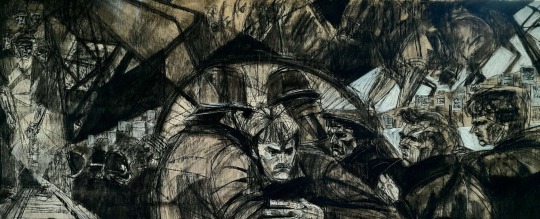
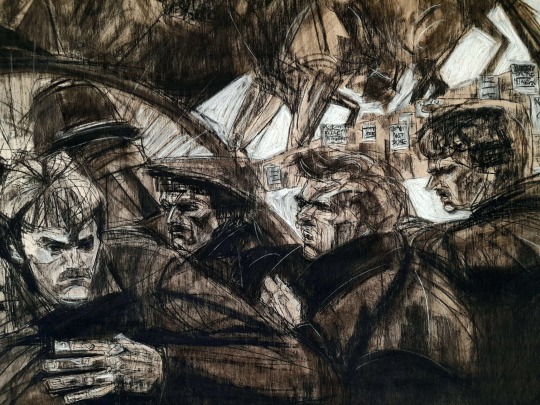
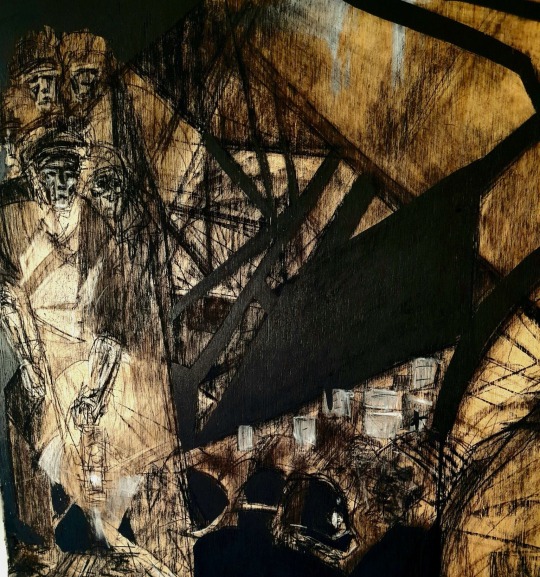
Hello! This is a draft piece for one of three murals that I will be producing for the final outcome of my Final Major Project!!
Gosh, I’m so excited to finish it. The only thing that’s kept me going is that I’ve based the project on a topic that I’m utterly fascinated by and obsessed with. Do not ask me about the 1984/85 Miners’ Strike and its history and legacy, and UK mining/ industrial history for that matter. (Ask me, I’ll be happy to talk about it!!)
This mural is focused on the confusion of the strike, the violence, the brutality. The horses are symbols of Orgreave. The miner in the mid-to-late 1800s fashion on the far left is carrying a Davy lamp*, the bright flame alluding to the peril at hand; the threat to livelihoods and jobs denoted by the jutting shapes of colliery heads toppled. The placards will contain various statements, ‘Coal Not Dole’, ‘Close A Pit, Kill A Community!’, ‘Respect Picket Lines!’, etc.
*I LOVE DAVY LAMPS!!! Davy lamps were first introduced in the early 1800s by a man named Sir Humphrey Davy. They were purposed to reduce accidents by explosions that occurred due to the exposure of open flames, relied on for providing light, to flammable gasses. Early models were rudimentary, but their main feature was the metal gauze that protected the oil-fuelled flame from being extinguished and from flammable gasses, so it was believed. Unfortunately, miners were not adequately educated about the importance of this lamp until the 1860s following the Mine Safety Act. Accidents actually increased, because it meant that mines previously deemed unsafe were reassessed because they didn’t register highly for flammable gasses or low Carbon Dioxide.
The lamp experienced various improvements and iterations. It would be carried low at the hip, and its flame would signal danger regarding the quality of air in the mines. If the flame was large and glowing with a blueish tinge, it meant that high levels of flammable gases mixtures were present. If the air was low in oxygen, the flame would be extinguished. This was referred to as ‘chokedamp’ or ‘blackdamp’. Unsurprisingly, the lamps were not supplied by the mines. Miners had to acquire their own partly because of the tradition of buying candles from the company store through credits which, might I add, were only valid in company-owned shops. Miners were paid only in these credits, and taxed highly for their purchases.
Somewhat of a footnote; I’m pretty sure Sir Humphrey Davy did not patent his invention because he wished merely for it to be implemented generally. He didn’t care about profit. Unfortunately, those who owned the mines did and thus Davy lamps were not adequately implemented until later on.
#charcoal#mural#draft#concept#artwork#Artist on tumblr#1984#miners’ strike#south wales#mining history#industry#art#history
28 notes
·
View notes
Text
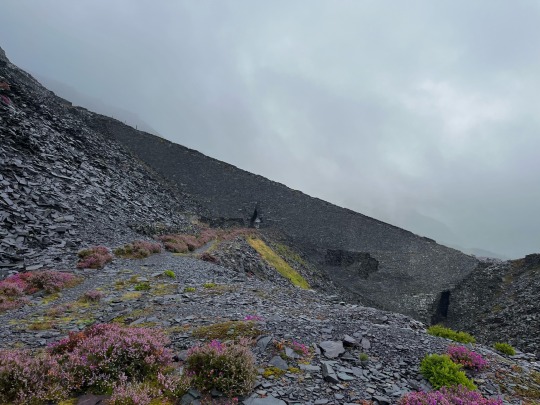

Tramway Inclines
Dinorwic Quarry, Eryri National Park
These massive inclines were used to transport workers, slate and basically anything else that needed to get transported down the mountain. They were constructed out of the slate that was mined there. Carts were pulled along the tracks by thick steel cables. They were quite the feat of engineering.
This is the largest one we saw at dinorwic it was monolithic!!
#photography#nature#hiking uk#hiking#uk#iphone photography#dinorwic quarry#quarry#slate#slate mine#history#wales#cymru#eryri#eryri national park#Elidir Fawr#mining#mining history
10 notes
·
View notes
Text
A while back, I made my research presentation into alum accessible; I was a little nervous with it being before the conference, so I kept it under request. However, the conference is now past and I have 0 desire to publish on this material. Have at it! References in the back.
Alum presentation
6 notes
·
View notes
Note
Happy STS! Are you researching anything in particular right now for TEoEH? If not, is there something you'd like to look into for your WIP in the future?
Happy STS! (This has been siting in my drafts for a week! I forgot to post!)
I tend to never stop researching, but I am trying to make my research more focused. Right now, I'm reading Moses Strong's articles on the surface and subsurface geology, mining practices, and the profitability of the Lead Region for the Wisconsin Geological Survey of 1873-1879. It's a a series of rather dense works that repeat themselves a bit, but they've been incredibly helpful in understanding how people lived on, worked in, and understood this pocket of the Midwest in late 19th century. Strong also provides a lot of diagrams of geologic strata and mining cross-cuts along with area-specific mining terminology that will be used in my descriptions and dialogue. After this, I'm probably going to move on to another, denser text on lead and zinc deposits that was published in 1907.
Sometimes, this type research feels very "focus on what readers really want to know, detailed plate tectonics"-y, but I like to think that any and all research (especially in historical fiction) is necessary in one way or another. Even if it doesn't explicitly feature, the research does add to your overall context of the period.
Also! The Strong pieces have some really beautiful illustrations of the area!

4 notes
·
View notes
Text

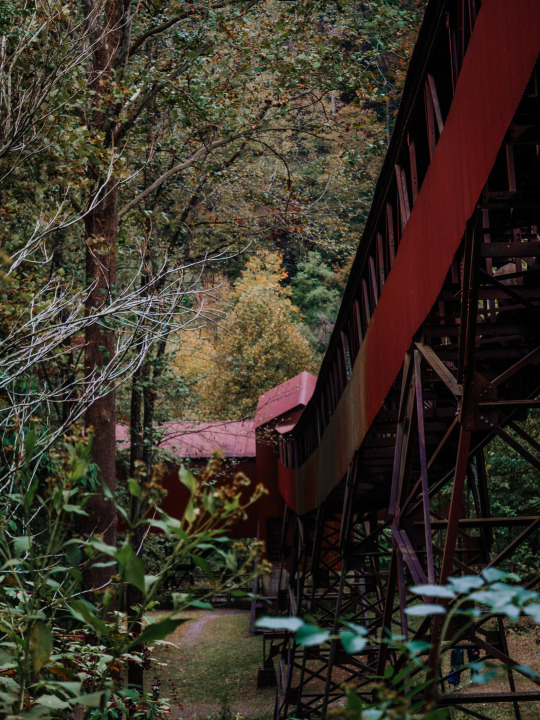
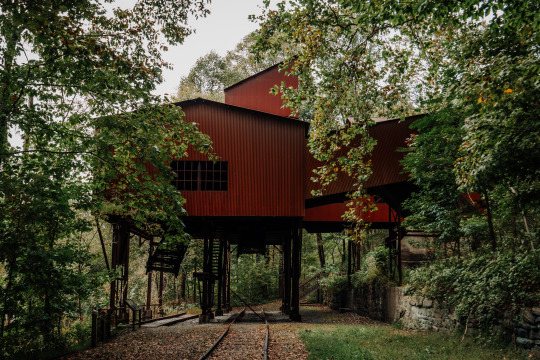
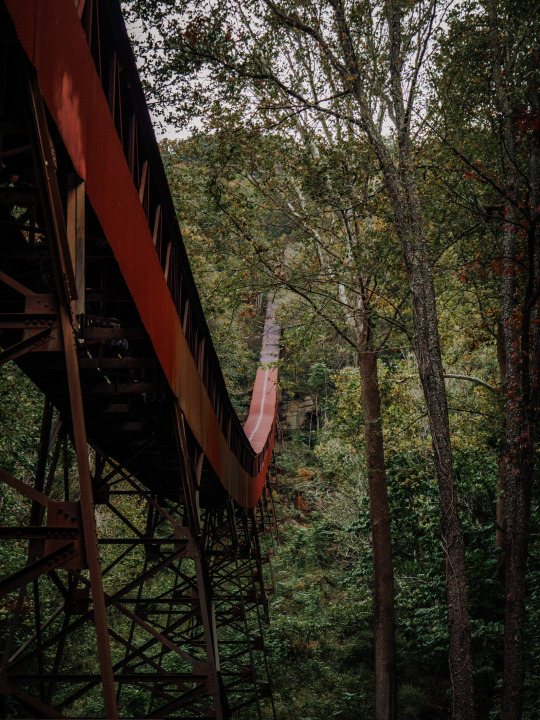

Nuttalburg
.
Photographed by Lily Helmick - Instagram | Tumblr
#appalachia#autumn#landscape#nature#landscape photography#nature photography#autumn photography#autumn vibes#history#mining#mining industry#mining history#coal mining#coal town#new river gorge#west virginia#appalachain mountains
15 notes
·
View notes
Text
They also used to use some clay and just... attach a lit candle to the top of their heads.
Basically, any instance you can think of of "surely, they didn't do this in the mines", they absolutely did do in the mines.
Children whose job was to crawl through tiny tunnels hauling minecarts? Absolutely, it's cheaper to make smaller tunnels, so you need smaller people. They also have jobs like "sit alone in the dark and open and close the air vent. If you fall asleep, you get beaten, and possibly everyone in the mines below you dies." You don't even have to pay them as much as adult men.

Bringing birds into the mines as living gas detectors? Of course, the birds have tiny, sensitive lungs and if your bird dies, that means it's time to get the fuck out. Miners actually would become so attached to their canaries that Canary Rescue Devices were invented to be able to lock the cage airtight and pump a little tiny tank of fresh air into it to hopefully save them.


The most terrifying moving ladders possible? It's called the Man-Engine.
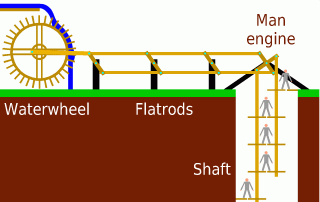
Doesn't look too bad, but here's a real one.

There's usually no other way in or out, and you don't start getting paid until you reach the bottom, so don't dawdle. It's powered by a waterwheel, so if you're in its way, it's not stopping, you're just getting crushed. It's also hanging from a single joint on each side. The Levant mine accident happened when that joint broke with over 100 men on the Man-Engine. Everyone that was on that side of the lift fell down the shaft, and dozens died. Most the ones that lived got lucky enough to land on top of the pile of bodies and it broke their fall softer than the solid rock, though they still had horrific injuries and were trapped at the bottom of hole in the dark, surrounded by corpses, for hours, until they could be rescued. And the people on the other half of the lift had to cling to the wooden beam for hours and hope that they didn't fall too. That is, the ones that weren't knocked off by falling bodies or the giant broken wooden structure that's collapsing next to you.
All the pictures I included are from the past, but rest assured, the mines aren't much better today, especially in places with lax labor laws. You can find plenty of photos and videos of modern children, as young as four, and possibly even younger, who are made to work in the mines, either due to effectively being enslaved or just by circumstances like extreme poverty. And before anyone starts thinking "oh, that's just third world countries, we're better than that over in the western world"... 1, most of those mines exist to supply us with things, like cobalt for batteries for electronics, and 2, we have child labor over here too. Migrant kids who work in the fields with their parents, poor kids paid under the table to work in factories, kids who's parents own a business and are allowed to put their child to work in it. Right-wing American politicians are even pushing to increase child labor in the USA.
Carbide or acetylene mining lamp, sauce here.
#not sure how to tag this#mining#mining accident#mining history#if anyone is wondering why I'm Like This#what can i say#I'm autistic and also was seconds away from having my leg amputated by a faulty homemade elevator as a small child#so safety matters to me#also don't let your kids play around with a homemade elevator especially unattended#it was at my grandfather's shop and he was a double amputee who lived above his shop#so my sister and i were playing a game and pushing the up button and then jumping in and out of the elevator for as long as possible#it did have doors but they didn't have a sensor to open them if something was in the way#i got my leg stuck in the door and the elevator started going up and i was sliding up the wall#luckily the elevator was slow as shit#so my dad heard me and my sister screaming and he grabbed me and yanked my leg out of the door before it got to the ceiling#although the irony of almost having my leg amputated by a machine in my legless grandfather's home is funny
34K notes
·
View notes
Text
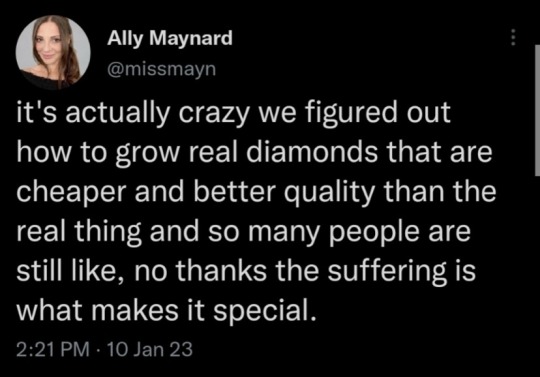
#modern day#modern day slavery#slavery#African#mines#diamonds#diamond mines#real diamonds#science#disgusting#the upper class#rich people#Twitter#tweet#save the children#protect children#from corrupt higher ups#powerful people#evil#evil people#Africa#miners#stupid#society#culture#society and culture#history#poverty
18K notes
·
View notes
Text

La paysanne (Sauce tomate, mozzarella, jambon blanc, lardons, huile d’olive, olives , origan)
#mining industry#mining town#mining history#panoramic camera#widelux f8#panoramic photo#miguel aguilar photographe#kodak tri-x 400#black and white
0 notes
Text
Red Rock and Liquid Silver: The Hidden History of Mother Lode Mine
0 notes
Text
The Silver Secrets of Manikaran Valley: Uncovering Kullu Riyasat’s Lost Wealth
#Ancient Riches#ancient wealth#gold in rivers#Gold Rivers#golden rivers#Himachal Pradesh#Himachal Pradesh history#Kullu Riyasat#lost legacy#Manikaran Valley#mining history#parvati river#sacred valley#Shamshi#Shamshi Gold#silver mines#silver refining formula#spiritual significance#Spiritual Sites
0 notes
Note
How competitive was the copper market? Would Ea-Nasir have been one of many sellers of broadly equivalent status all trying to make a buck, like how one town might have six building firms all competing for work, or would he have had a near-monopoly like Starbucks? Would he have been a sole trader who brokered deals between mines and consumers, or would he have managed a warehouse with employees and held stock, etc?
Oh SHIT, I never answered this and it got lost in my drafts! I'm so sorry.
This is a fantastic question! Just to flesh out the picture of the trade in the day: Bronze is an alloy of copper (Cu) with either arsenic (As) or tin (Sn). Arsenic is a common unwanted element in copper deposits, and copper-arsenic-oxide (Cu-As-O) minerals look very similar to plain copper minerals. However, tin (Sn) occurs in very different, rarer, geologic environments, and thus must be sourced from different areas.
Likewise, As-Bronze is less malleable than copper, but not by much; arsenic ions are about the same size. Tin ions form good bronze because they're larger than the copper ions and prevent the metal from freely deforming, so it was prioritized for weapons and tools. Arsenic was used when tin wasn't available.
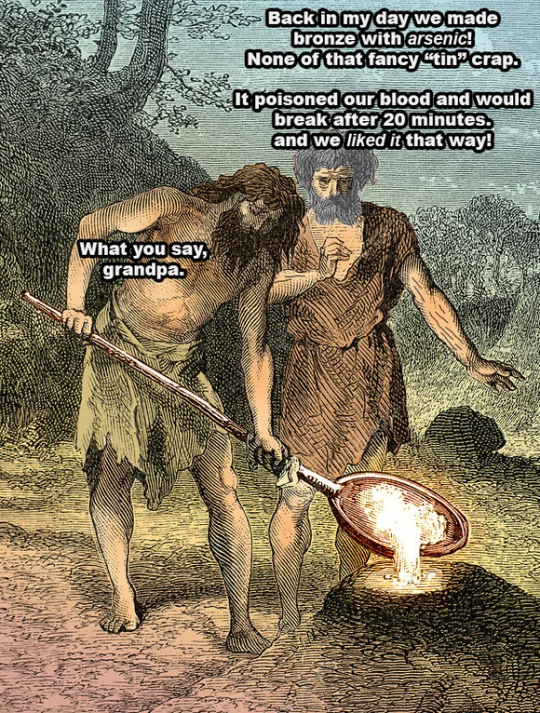
Ur was known for being one of the best cities for bronzework during the Bronze Age: metalworking services were in high demand, and they were the center of the copper, arsenic, and tin trades. Copper from Oman (or Cyprus, as their industry was developing more at the time), tin from Afghanistan, Southeast Asia, or Turkey, (depending on which archaeologist you talk to), and arsenic from India or Egypt.
So yeah, as a middleman, Ea-Nasir probably had numerous competitors who procured copper from Oman, particularly from the halfway point in Qatar, and then sent it back to Ur. Also referencing the plural translation "-those of the people who travel to Dilmun-", although likely only a few of those merchants were chosen to sell to the temple/government. (But that's speculation. Maybe the temple picked one person a year? Maybe copper tithes meant there was usually supply, and it was only this year during war the temple picked Ea-Nasir to buy from.)
It's also quite possible there were people doing copper business like Ea-Nasir further up the Tigris and Euphrates closer to Cyprus, and there were definitely specialist merchants for arsenic-copper and tin procurement. Once the copper was in the city, his buyers were refiners and metallurgists who made the bronze or copper wares that were purchased/exported throughout the Middle East.
As for employees and stock, I honestly don't know. But from the letters, it sounds like he was stretched rather thin, and he was dealing with buyers' messengers himself. So I wouldn't be surprised (although this is speculation) if it was just him and perhaps a servant/slave of the period to handle things in Ur while he was in Dilmun.
[Image References under the cut]
meme from r/historymemes
Peterson, 2012. Forging Social Networks: Metallurgy and the Politics of Value in Bronze Age Eurasia. The Archaeology of Power and Politics in Eurasia. Cambridge University Press. DOI: https://doi.org/10.1017/CBO9781139061186.018
Content References within my other Ea-Nasir writeups under iamthepulta: #mining history, or #ea nasir
#copper#metallurgy#mining history#trade#bronze age#ea nasir#Technically arsenic bronze would bend afaik but the meme was too funny not to include.
44 notes
·
View notes
Text

A teenaged miner heads home after finishing his shift, 1960s
#art#illustration#charcoal#artwork#artist on tumblr#history#sketchbook#miners’ strike#Uk history#mining history#portrait
17 notes
·
View notes
Text
The Fluorite Mines of Southern Illinois: A Hidden Gem in American Mining History
Southern Illinois is renowned for its rich deposits of fluorite, also known as fluorspar. This region, particularly Hardin and Pope counties, has been a significant contributor to the United States’ fluorite production. Fluorite, a colorful mineral used in a variety of industrial applications, has a fascinating history in this part of the country. This article delves into the geological,…
#economic impact#fluorite#Geology#Illinois-Kentucky Fluorspar District#industrial minerals#mining history#Southern Illinois
1 note
·
View note
Text
hiii look at these really cool pictures of mining in Ancient China


link
#mining history#china#metallurgy#nobody irl wants to look at this cool ancient mining art so I will post it to tumblr T-T
6 notes
·
View notes
Text





Rome on film 10.2024
Canon AE-1 / Kodak Gold 200
#mine#photography#35mm film#film photography#kodak gold 200#canon#rome#italy#europe#architecture#aesthetic#travel#photographers on tumblr#city photography#street photography#places#ancient rome#ancient history#history#light academia#academia#studyblr#booklr#naturecore#cottagecore#moody#dark academia#film#35mm#35mm photography
11K notes
·
View notes